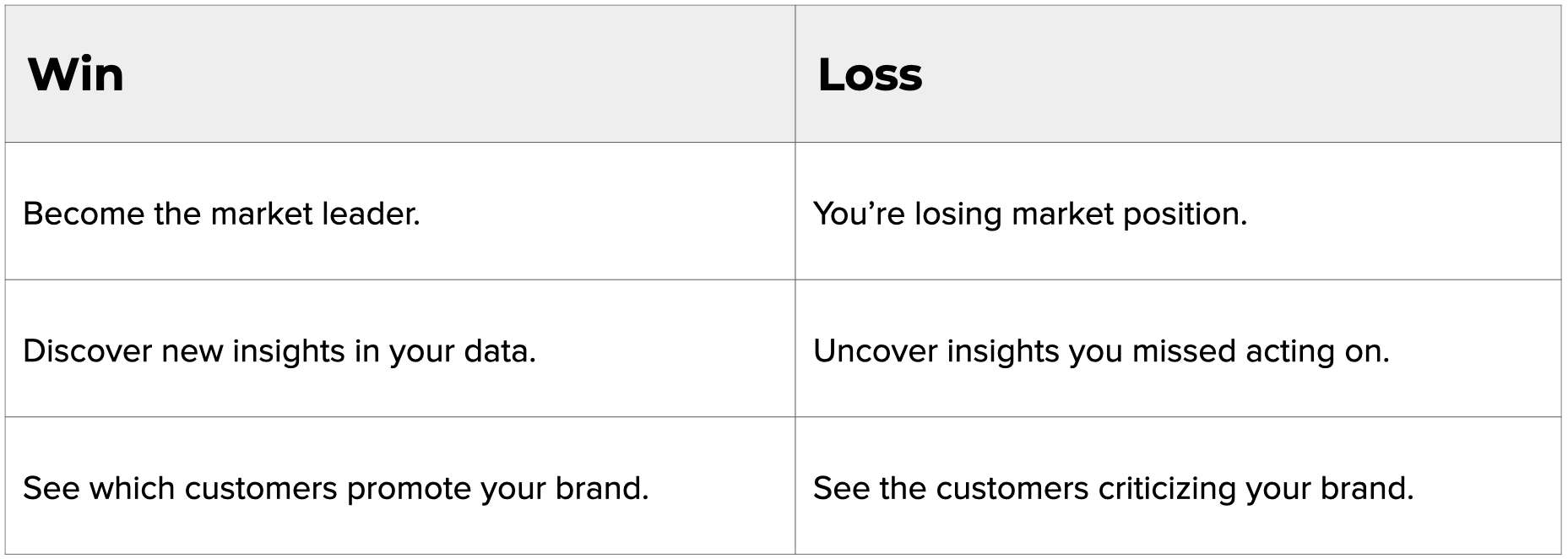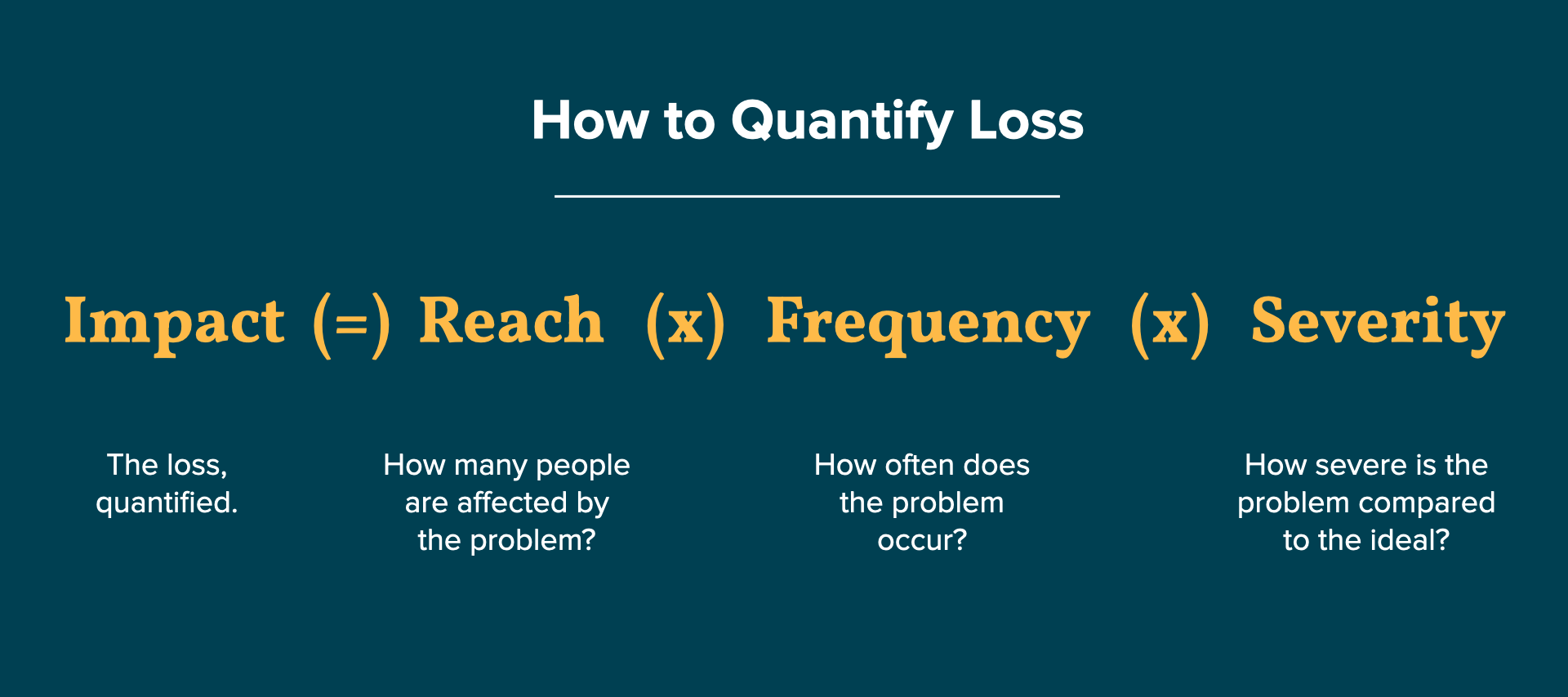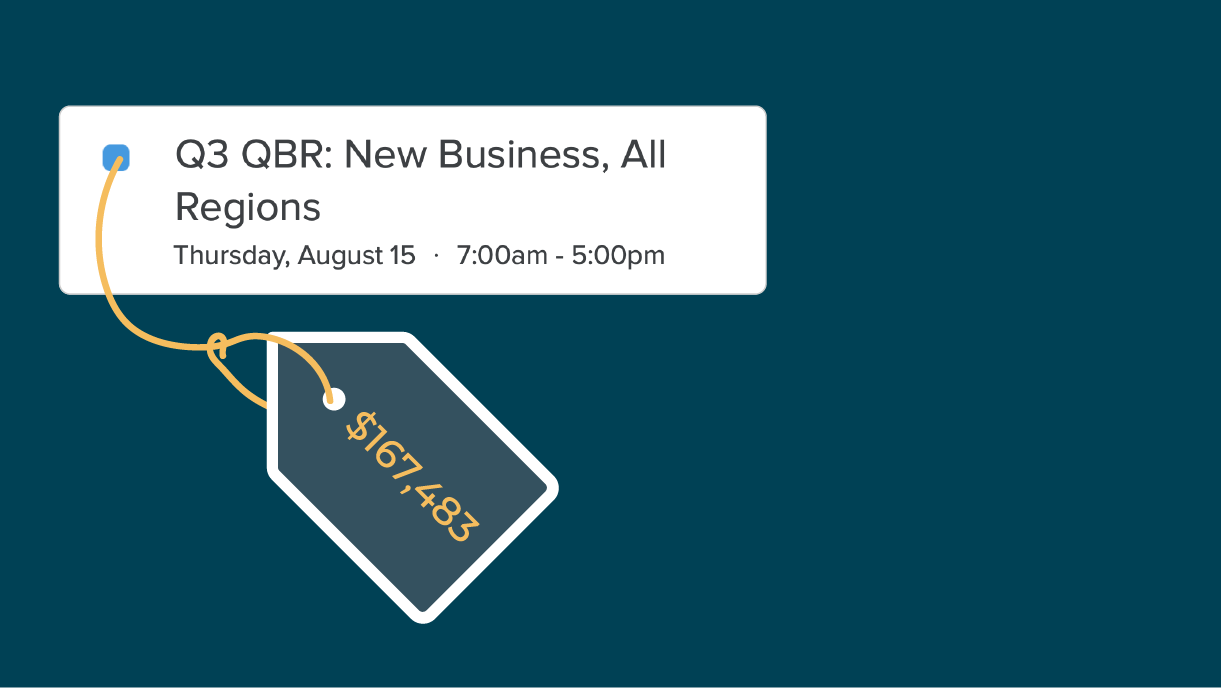How to Build a Compelling Problem Statement (+Case Study)
Your pipeline’s ‘Closed Lost’ column is filled with prospects who expressed the exact same pain points as your customers.
Both of these groups started from the same place — a list of pains that align with your product. But they ended their buying journey in two different places.
So what gives? How does a picture-perfect deal, with a prospect whose problems are a match for your product, fall through?
Nobody cared (enough).
Really. Sometimes, a competitor steals the deal. Others times, a budget gets re-allocated. But more often than not, your deal just slipped down the priority list. Your champion couldn’t get their team interested. The decider didn’t take the time to take a look.
That’s because your champion didn’t tell a compelling story that cut through the clutter.
Some champions are natural storytellers. They hit all the high notes. They know how to make their team lean in a little closer. But other buyers need your help.
They need a specific, compelling problem statement that grabs and holds attention.
Here’s how to create one.
The Formula for Compelling Problem Statements
First, I’ll give you the formula. Then, we’ll break down each of its parts.
Costs
Every [Frequency], at least [Reach] are [Pain], costing us [Impact].
Consequences
That means [Implication #2]. If that’s not addressed by [Timeline], then [Implication #3].
Part 1: Focus on Costs
We all feel more upset if we lose $10, than we feel happy if we find $10.
That’s the basic idea of “Loss Aversion.” We feel a greater pressure to avoid losses than we do to acquire the equivalent gain. It’s also why you should build your problem statement around losses.
Highlight active or immanent losses first, before calling out new opportunities.

To make the loss compelling, be specific. And to be specific, quantify the impact of your buyer’s problem whenever possible. A simple way to estimate the impact is:

Don’t give your best guess. Ask your buyer what their guess is. Then, write it down with them. Here are a few examples, with some made up numbers:

Once you’ve quantified the problem, don’t assume the loss is meaningful.
For example, if you’re selling to the enterprise, beware of The Law of Large Numbers. Pointing out a $1M loss is pointing out 0.0001% in a business that does $10B in annual revenue.
Instead, ask questions like:
- How does this estimate of [X] compare to what you expected to see?
- How do you think [decision maker] would react to seeing this number?
- Are there other problems your team’s facing that are more pressing than this?
Part 2: Highlight Consequences
You’d be surprised what overwhelm and burnout can force us to live with. We grow numb to our problems, and apathy becomes a perfectly acceptable solution.
But often, that’s because we can’t see the full consequences of our inaction. So once you’ve quantified the loss (above), press into its implications. There are three levels of consequences you’ll want to speak to:
- Functional Problems: “It takes a long time to build customer surveys and analyze the data.”
- Strategic Problems: “We’re not sure which customers are a churn risk before their renewal date.”
- Personal Problems: “Me, or someone on my team, may lose our job if renewal revenue declines.”
Now, nobody likes talking consequences. So generally, it’s best to lead your buyers to them with questions — not statements. Questions that start by asking:
- What happens if...
- What does this mean for...
- How will that affect...
Bringing It All Together
If your head is spinning with “math” right now, your buyer’s will be too.
While you’ll quickly become fluent in problem statements using this framework, your champion will need some help. So from here, make sure to:
- Put their story to the test. After you’ve drawn out all the component parts with your champion, ask them to play back the story. Is it compelling? Is their delivery confident?
- Write it out for them. Give them something to refer back to during a conversation, and to send around to their team afterwards.
- Develop a problem statement process. Getting the data you need to turn a minor-annoyance into a can’t-ignore mega issue may require some creativity. Here’s a case study on that, below.
[Case Study] “My board definitely needs to see this.”
The breakthrough that let one my past sales teams cross the chasm from $500K, to $5M, in ARR was the process for enabling our champions with a can’t-ignore problem statement.
Here’s the full story.
Creating Context
We sold marketing and fundraising software to nonprofits. CRM, landing pages, payments, email, text, video, all-in-one. For context, our market was the 1.2M nonprofits raising close to $500B every year.
A portion of this funding comes from foundations. Foundations are organizations that exist to give out large chunks of money to nonprofits called “grants.” These grants are great when you get them, but they’re not sustainable.
For example, a $500K grant needs to be replaced with a wider group of individual donors before it’s fully spent. Otherwise, the nonprofit can’t keep funding their programs and payroll.
When nonprofits don’t raise money from individuals, that’s a problem. Think of it like investing in a startup. If the startup doesn’t find customers to generate cash — aside from raising more venture funding — the investment was for nothing. There’s no revenue to keep the show going.
Collecting the Right Data
I had created a champion out of the Head of Grantmaking at one of the nation’s largest family foundations. They grant out more than $50M to nonprofits every year, and she saw the problem we were solving.
She knew our software could help her nonprofits raise more funding, but buying software for 20 nonprofits would be a significant, six-figure deal — which needed board approval. What’s more, her board had never funded a for-profit company’s software before. Generally, nonprofits are skeptical of for-profits, regardless of their social good.
We were rolling a boulder uphill, and needed a compelling story. We were chatting one day when I said, “This may be crazy. But what if we asked all your nonprofits for their fundraising data, to show your board?”
She was up to give it a shot. So next, I:
- Wrote a three-part email campaign requesting her nonprofits help her out with a survey.
- Signed up for Typeform and built out a simple survey to collect fundraising data.
- Opened up a free Mailchimp account and built out the survey campaign.
- Recorded a Loom video that showed my champion how to upload a list of emails and hit “send.”
- Downloaded all the survey responses a week later and crunched the data in Excel.
- Put together a short, 2-page report for the next board meeting packet.
Crafting the Problem Statement
That report shared this statement:
Every year, at least 200 of the Foundation’s nonprofits raise less than 20% of their annual budget from individual donors, which is costing the Foundation more than $10M in follow-on funding to keep them operational.
This means the programs we support are at risk of closing, if we don’t continue to fund them. If that’s not addressed inside this fiscal year, we’ll be unable to allocate this funding to new initiatives outlined in the strategic plan we’re voting on today.
When my champion saw this, she immediately said, “My board needs to see this.”
Here’s the end of the story.
This paragraph — not a case study, deck, or demo — helped my champion closed the deal.
That deal not only pushed us over quota for the month, it opened up a whole new market segment. We could now point to their foundation, and the 20 nonprofits they brought with them, as one of our customers. That gave us credibility to start engaging with other foundations.
In fact, we hired on a new FTE for our sales enablement team, who built out and perfected that survey process. It became a “free assessment” we gave to every champion in our pipeline.
FAQ's on:
Why stop now?
You’re on a roll. Keep reading related write-up’s:
Draft with one click, go from DIY, to done-with-you AI
Get an executive-ready business case in seconds, built with your buyer's words and our AI.

Meet the sellers simplifying complex deals
Loved by top performers from 500+ companies with over $250M in closed-won revenue, across 19,900 deals managed with Fluint

Now getting more call transcripts into the tool so I can do more of that 1-click goodness.



The buying team literally skipped entire steps in the decision process after seeing our champion lay out the value for them.


Which is what Fluint lets me do: enable my champions, by making it easy for them to sell what matters to them and impacts their role.









